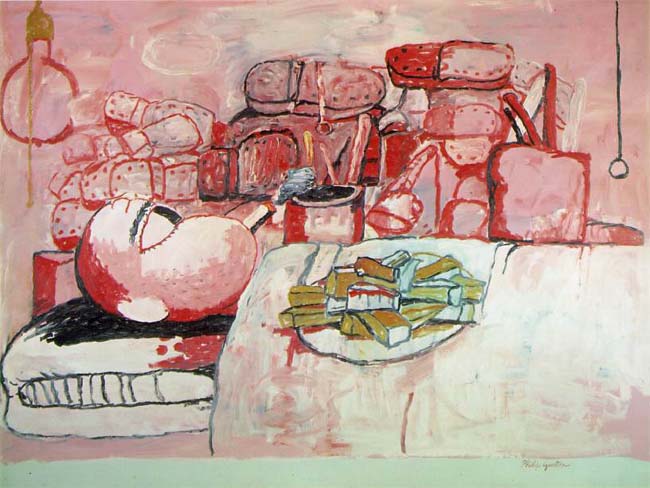Oh the shame. While browsing C-Monster's SFMOMA photo essay today, I realized I had never yet seen Philip Guston's abstract work. Or maybe I have and instead only remember his once famous art world reversal to stylized figurative paintings in the late 60's. In either case, I've seen lots of Guston's later work and always just understood this to be a complete change for someone originally associated with abstraction. Maybe I wasn't paying attention in class, or it's just more common now to see Guston represented with his figurative work.
But how awesome that his abstract paintings appear to be composed of the same marks, colors and smudges that characterized his figurative work. Suddenly it doesn't seem too weird that his later paintings came about. It's almost as if he untangled these figurative subjects from his messes.
However, knowing Guston as I did for so long, I think it makes seeing his abstract more exciting - rather than had I been paying attention and properly digested him as an abstract painter than a figurative one. Or maybe, painting today, it's still more common for an artist to follow that linear path: figurative loosening into abstraction.
It's really exciting to see Guston's taming of something like abstraction. And then look back and see the same Guston, just distilled.



thanks for bringing up Guston's earlier work, amazing work and definitely full of excitement.
ReplyDeletethis reminds me of something i always keep in my mind that an artist once told me, whom i greatly admire,
the more literal the more abstract.
simple, but very true. for some reason it is difficult to wrap my head around. the proximity of things allows for expansion at large
Actually my favorite stuff of his is the mid-period work of the early to mid-sixties, murky grey blobs with images starting to cohere within, like figures starting to emerge from a dense fog... weird, ugly, amazing stuff.
ReplyDelete